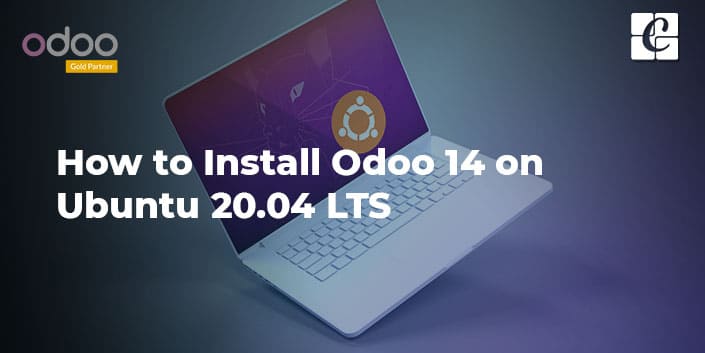Install Odoo on Ubuntu machine
Posted By :Harish Dhakad |19th July 2022
What is Oddo and why we use Odoo
Odoo has become the most favorite choice for a large number of businesses because oddo can handles a wide range of business needs.No One can deny the importance and the features of Odoo as oddo is helping businesses to grow. Odoo is basically considered as a comprehensive business management software. In other words, we can say that Oddo software is a complete suite of open source business apps.
Odoo lets the user deal with different functionalities related to bussiness like CRM, sales, inventory, reporting, accounting, sending invoices, etc.
There are many features of Odoo which can benefits growing business effectively.
Features of Odoo
It is open-source software.
Integrated Scalability; which means we can use the variety of modules in Odoo as per our business growth
It is flexible and easy to customize.
Can help manage a variety of industries.
Some Important Terms in Odoo
Oddo Platform
The Odoo Cloud Platform is essentially a platform built for Odoo end users. It enables end-users to easily test developments, manage feature branches, and beta-test features on duplicates of their customer's production instances.
Odoo Partners enables end users to have access to different restricted Odoo capabilities. They have access to the source code for Odoo's enterprise edition. Odoo partners are split into three categories: gold, silver, and ready.
Popularity Of Odoo
More than 2 million active users.
Available in more than 32 languages.
1000 installs per day.
1457% user growth.
Used in various types of industries.
Top 10 Reasons That Odoo Is A Boon For growing Business
One solution for your entire business.
Low cost of implementation.
Customizable.
Easy integration.
Easy to implement.
There are several alternatives to choose from in Odoo, including three editions.
Scalable.
Powerful Community.
Security.
Intuitive user interface.
Installation of Odoo on ubuntu machine
Odoo can be installed in several ways, based on the use case and the technology available. The official Odoo APT repositories are the most convenient and rapid way to install Odoo.
Installing Odoo in a virtual machine, or deploying as a Docker container, provides additional control over the programme and allows you to operate several Odoo instances on the same server.
This article demonstrates how to install and run Odoo 14 in a Python virtual environment on Ubuntu 20.04. We'll get Odoo from its official GitHub repository and utilise Nginx as a reverse proxy.
Installing Prerequisites
The following command installs Git , Pip , Node.js , and the [tools required to build]
sudo apt update
sudo apt install git python3-pip build-essential wget python3-dev python3-venv \
python3-wheel libfreetype6-dev libxml2-dev libzip-dev libldap2-dev libsasl2-dev \
python3-setuptools node-less libjpeg-dev zlib1g-dev libpq-dev \
libxslt1-dev libldap2-dev libtiff5-dev libjpeg8-dev libopenjp2-7-dev \
liblcms2-dev libwebp-dev libharfbuzz-dev libfribidi-dev libxcb1-dev
Creating a System User
Odoo cannot be run as the root user due to security concerns. We will create a new system user and group, with the home directory /opt/odoo14, to run the Odoo service. To get this, type the following command:
sudo useradd -m -d /opt/odoo14 -U -r -s /bin/bash odoo14
You can give the user any name you choose, as long as you create a PostgreSQL user with the same name.
Installing and Configuring PostgreSQL
Odoo uses PostgreSQL as the database back-end. PostgreSQL is included in the standard Ubuntu repositories. To install it, run:
sudo apt install postgresql
Once the installation is finished, create a PostgreSQL user with the same name as the previously created system user. In this example, that is odoo14:
sudo su - postgres -c "createuser -s odoo14"

Installing wkhtmltopdf
wkhtmltopdf is a collection of open-source command-line programmes for converting HTML pages to PDF and other image formats. To print PDF reports in Odoo, install the wkhtmltox package. The recommended version for Odoo is version 0.12.5, which can be download from Github:
sudo wget https://github.com/wkhtmltopdf/wkhtmltopdf/releases/download/0.12.5/wkhtmltox_0.12.5-1.bionic_amd64.deb
After downloading the file, type the following to install it:
sudo apt install ./wkhtmltox_0.12.5-1.bionic_amd64.deb
Installing and Configuring Odoo 14
In an isolated Python virtual environment, we'll install Odoo from the source.
First, change to user “odoo14â€:
sudo su - odoo14
Clone the Odoo 14 source code from GitHub:
git clone https://www.github.com/odoo/odoo --depth 1 --branch 14.0 /opt/odoo14/odoo
Build a fresh Python virtual environment for Odoo.
cd /opt/odoo14
python3 -m venv odoo-venv

Activate the virtual environment:
source odoo-venv/bin/activate
Install all required Python modules with pip3:
pip3 install wheel
pip3 install -r odoo/requirements.txt
Once done, deactivate the environment by typing:
deactivate
Create a new directory to hold the third-party addons:
mkdir /opt/odoo14/odoo-custom-addons
We’ll add this directory to the addons_path parameter. This parameter specifies a list of directories in which Odoo searches for modules.
Switch back to your sudo user:
exit
Create a configuration file with the following content:
sudo nano /etc/odoo14.conf
Creating Systemd Unit File
Open the text editor and create a service unit file named odoo14.service with the following content:
sudo nano /etc/systemd/system/odoo14.service
Notify the systemd programme that a fresh unit file exists.
sudo systemctl daemon-reload
Start the Odoo service and set it to start at boot by running:
sudo systemctl enable --now odoo14
Verify the service status:
sudo systemctl status odoo14
The output should look like the following, indicating that the Odoo service is operational and running:
â— odoo14.service - Odoo14
Loaded: loaded (/etc/systemd/system/odoo14.service; enabled; vendor preset: enabled)
Active: active (running) since Fri 2020-10-16 19:05:32 UTC; 3s ago
...
To view the messages logged by the Odoo service, run the following command:
sudo journalctl -u odoo14
Testing the Installation
Open your browser and type: http://<your_domain_or_IP_address>:8069
Assuming that the installation succeeds, a screen like the following will appear:




